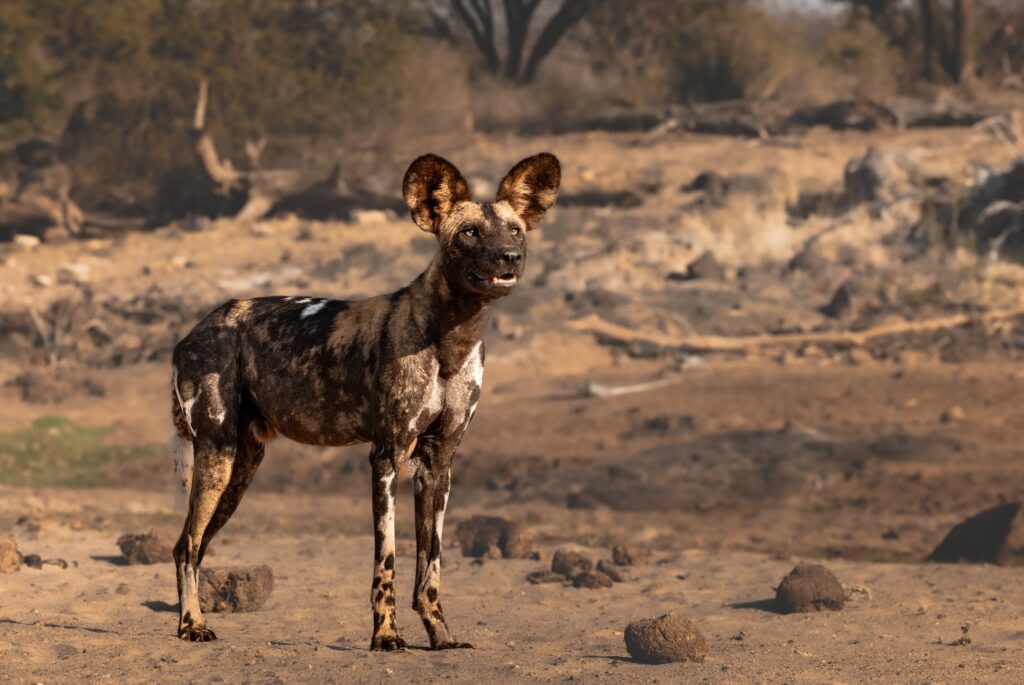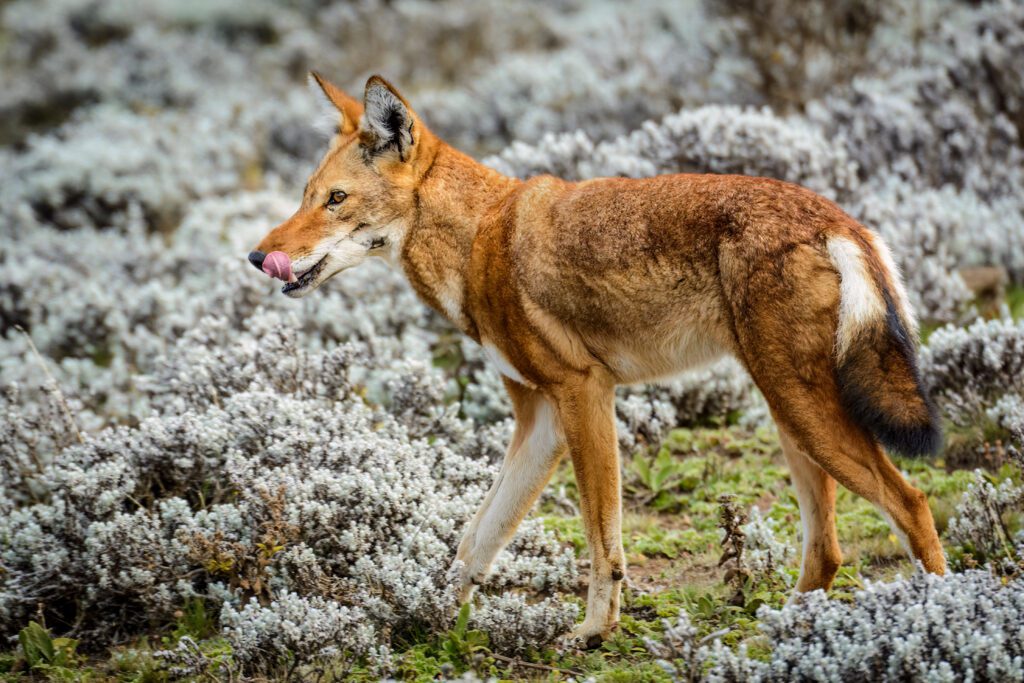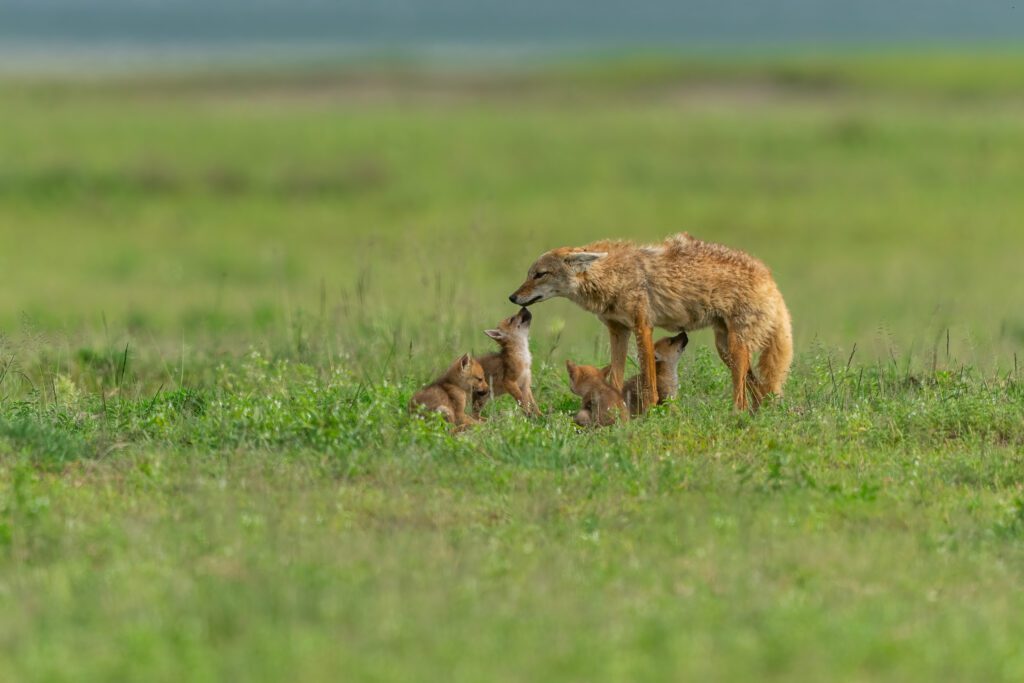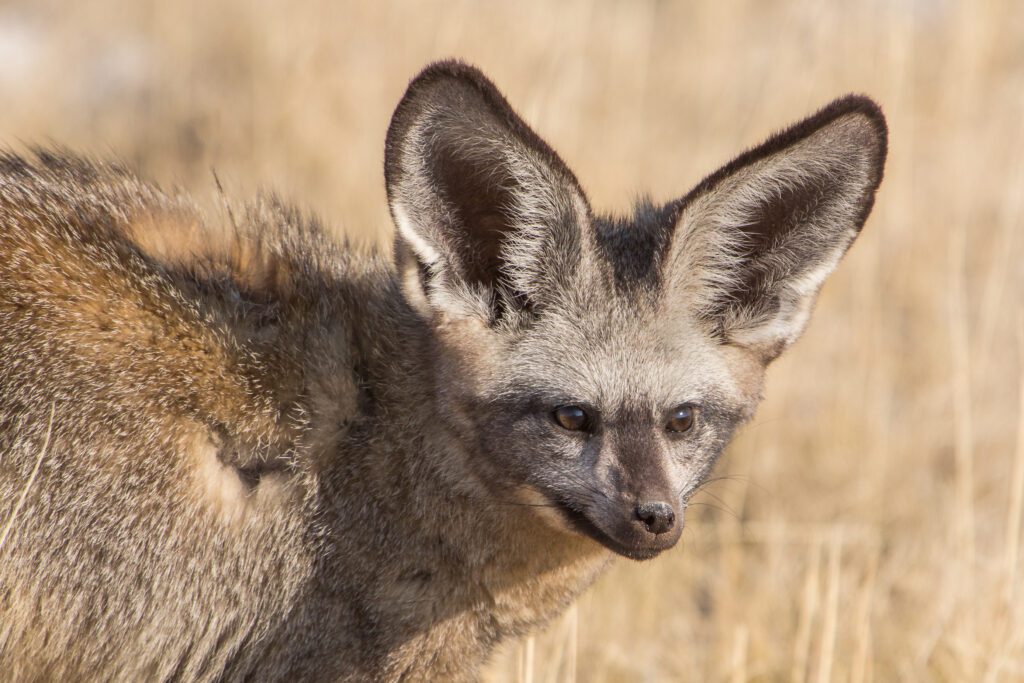When most people think of African predators, lions, leopards, and hyenas often come to mind. Yet Africa is also home to a surprising diversity of wild canines. From the desert-dwelling fennec fox to the critically endangered Ethiopian wolf, these species have adapted to niches as varied as the Sahara dunes, the Ethiopian highlands, and the open savannas of Tsavo. Among them, the African wild dog stands out as one of the continent’s most endangered—and one of Tsavo’s most inspiring conservation stories.
African Wild Dog (Lycaon pictus) – Tsavo’s Painted Wolf
African wild dogs, also known as painted wolves, are instantly recognisable for their patchwork coats, large rounded ears, and lean, athletic build. Adults weigh between 20–30 kg and live in highly social packs, led by an alpha pair. They are among the most efficient hunters in Africa, succeeding in up to 80% of their pursuits by relying on endurance and teamwork rather than stealth or strength.
In Tsavo, wild dogs were once thought locally extinct. For decades, sightings were so rare that many assumed they had vanished from the ecosystem entirely. Encouragingly, recent surveys show a population of about 111 individuals within the Tsavo Conservation Area, with a density of 0.52 per 100 km². This forms part of Kenya’s total estimated population of around 865 wild dogs.
Conservation action has been key to this recovery.
-
Tsavo Trust, in partnership with the Kenya Wildlife Service and local communities, works to reduce the biggest threats—particularly rabies and human-wildlife conflict.
-
Education of pastoralists on stronger bomas (livestock enclosures) has reduced conflict killings, while traditional land use practices are being encouraged to maintain wild habitats.
Elsewhere in Kenya, such as Samburu-Laikipia, wild dog populations have increased eight-fold in a decade thanks to similar efforts—proof that dedicated conservation can bring these endangered predators back from the brink.

Ethiopian Wolf (Canis simensis) – The Highland Specialist
Endemic to the Ethiopian highlands, the Ethiopian wolf is on of the world’s rarest canids and Africa’s most endangered carnivore, with fewer than 500 left in the wild. Slender, long-snouted, and reddish in colour, these wolves weigh 14–20 kg and are specialist hunters of Afroalpine rodents, particularly the giant molerat. Unlike wild dogs, they hunt alone, carefully listening and pouncing on prey in alpine meadows above 3,000 metres. Their survival is threatened by habitat loss and disease from domestic dogs.

Jackals and the African Golden Wolf
Africa is also home to three jackal-like species:
-
Black-backed jackal (Canis mesomelas) – Common across East and Southern Africa, weighing 7–13 kg, often seen scavenging at kills but also skilled hunters of small antelope and hares.
-
Side-striped jackal (Canis adustus) – Prefers woodland and forest margins of Central and West Africa, omnivorous with a diet including fruit, insects, and carrion.
-
African golden wolf (Canis lupaster) – Once thought to be a golden jackal, genetic studies revealed it as a distinct species. Found across North and East Africa, adaptable and opportunistic.
These species are far less threatened than wild dogs or Ethiopian wolves, though they face pressure from habitat loss and persecution as livestock raiders.

Foxes of Africa
Africa is home to an array of fox species, each finely tuned to its environment:
-
Fennec fox (Vulpes zerda) – Tiny desert fox (1–1.5 kg) with enormous ears that radiate heat and detect insects and rodents under the sand. Found across the Sahara.
-
Bat-eared fox (Otocyon megalotis) – Savanna fox weighing 3–5 kg, specialising in termites and other insects, often found in family groups.
-
Cape fox (Vulpes chama) – Southern Africa’s only true fox, 2–5 kg, hunts rodents and birds in arid regions.
-
Pale fox (Vulpes pallida) – A little-studied fox of the Sahel, nocturnal and omnivorous, ranging across semi-deserts from Senegal to Sudan.
-
Rüppell’s fox (Vulpes rueppellii) – Small Saharan fox adapted to deserts and gravel plains, omnivorous, often found in rocky areas.
-
Red fox (Vulpes vulpes) – Introduced populations in North Africa, an invasive species with a much wider global range.

Conservation challenges
Among Africa’s canines, two species are especially threatened:
-
African wild dog – Endangered, with only ~6,000 left continent-wide.
-
Ethiopian wolf – Critically endangered, with fewer than 500 individuals.
The main threats include:
-
Disease: Rabies and canine distemper from domestic dogs.
-
Habitat loss: Expanding agriculture and settlement.
-
Persecution: Retaliatory killings due to livestock predation.
Africa’s wild canines range from desert foxes to alpine wolves, from solitary hunters to pack-living strategists. Each plays a role in shaping ecosystems, controlling prey populations, and maintaining ecological balance.
In Tsavo, the return of wild dogs shows how targeted conservation—disease control, community partnerships, and landscape protection—can restore a species once thought lost. Safeguarding them alongside Africa’s other unique wild canids not only preserves biodiversity but also strengthens the health of ecosystems across the continent.
Want to support our efforts in protecting Tsavo’s wildlife, follow this link to learn more.

